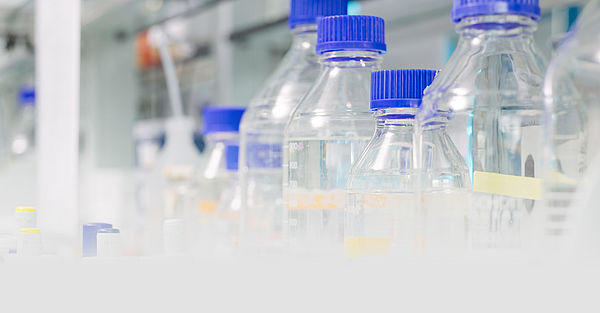

Dystonia is the third most common movement disorder, and mutations in a growing number of genes have been identified as causes for hereditary forms in many cases. The aim of the group, which brings together clinical experience in the diagnosis and treatment of the dystonias with expertise in molecular genetics, is to define the role of known genes in the etiology of dystonia, but especially to find new genes and therefore gain novel insight into the molecular pathogenesis of the disorder. Patient recruitment is based on the departmental outpatient clinic for botulinum toxin treatment led by Prof. Schöls, on international collaborations but also on the work of Dr. E.Lohmann, who is presently working at the University of Istanbul, supported by a Margarete von Wrangell-stipend. As Turkey is a country with a high rate consanguinity, the prevalence of hereditary recessive diseases is greatly increased. Building on an existing cohort of patients with dystonia from consanguineous families in Turkey,detailed phenotyping and a thorough work-up of the families will provide the basis for future genetic analyses.
Dystonia
The identification of ATP1A3 for rapid onset dystonia parkinsonism and MR-1 for paroxysmal non-kinesiogenic dyskinesia revealed interesting new insights into pathways of the brain that may be involved in dystonia development. The hitherto set thematic focus on the characterization of the genetic and molecular pathogenetic aspects of torsin A and epsilon sarkoglycan have been continued and intensified.
Myoclonus-dystonia
Genetics and molecular pathogenesis of myoclonus dystonia
Myoclonus dystonia (M-D, DYT11) is a dystonia-plus syndrome, in which the patients suffer from focal or segmental dystonia in addition to "lightning" myoclonia.
Our previous mutation screening demonstrated heterozygous exonian mutations in the gene for epsilon sarkoglycan (SGCE) in over 80% of familial cases. Genetic heterogeneity has also been assumed for the other families, which is supported by the mapping of an alternative gene locus on chromosome 18 (DYT15)(Grimes et al 2002).
However, the etiology of the sporadic, almost in all cases, mutation-negative cases of SGCE is still insufficiently understood. We analyzed the promoter sequence of 40 sporadic patients who clinically met the criteria of myoclonus dystonia. It was found that the promoter region is highly conserved. Only a few SNP variations could be found. In the next step, the effect of these polymorphisms on the SGCE expression level will be investigated by luciferase assays.
No role is played by SGCE in the pathogenesis of sporadic Gilles de la Tourette cases in a cohort of 83 German index patients. Exonian mutations could be excluded. There was no evidence for a genetic association of GTS with the 7q21 region. The molecular biology work on the generation of a conditional mouse model for SGCE was continued and further protein-chemical phenotyping experiments were established. The cooperation with the Neurological Clinic of LMU, Munich (Prof. Dr. T. Brandt, Dr. A. Deutschländer) was continued with Voxel-based morphometry (VBM) investigations. Interestingly, with this volumetric method, similar regions of interest are found as with the functional nuclear spin measurements. These are frontal cortical and subcortical structures involving the thalamus.
Original articles
Asmus F, Schoenian S, Lichtner P, Munz M, Mayer P, Muller-Myhsok B, Zimprich A, Remschmidt H, Hebebrand J, bandmann O, Gasser T. Epsilon-Sarcoglycan (SGCE) is not involved in sporadic Gilles de la Tourette syndrome. Neurogenetics 2005
Deutschlander A, Asmus F, Gasser T, Steude U, Botzel K. Sporadic rapid-onset dystonia-parkinsonism syndrome: Failure of bilateral pallidal stimulation. Mov Disord 2004.
Kamm C, Boston H, Hewett J, Wilbur J, Corey DP, Hanson PI, Ramesh V, Breakefield XO. The early onset dystonia protein torsinA interacts with kinesin light chain 1. J Biol Chem. 2004 May 7;279(19):19882-92
Kamm C, Leung J, Joseph S, Dobyns WB, Brashear A, Breakefield XO, Ozelius LJ. Refined linkage to the RDP/DYT12 locus on 19q13.2 and evaluation of GRIK5 as a candidate gene. Mov Disord. 2004 Jul;19(7):845-7
Hewett JW, Kamm C, Boston H, Beauchamp R, Naismith T, Ozelius L, Hanson PI, Breakefield XO, Ramesh V. TorsinB--perinuclear location and association with torsinA. J Neurochem. 2004 Jun;89(5):1186-94
Hewett J, Ziefer P, Bergeron D, Naismith T, Boston H, Slater D, Wilbur J, Schuback D, Kamm C, Smith N, Camp S, Ozelius LJ, Ramesh V, Hanson PI, Breakefield XO. TorsinA in PC12 cells: localization in the endoplasmic reticulum and response to stress. J Neurosci Res. 2003 Apr 15;72(2):158-68
Castelon Konkiewitz E, Trender-Gerhard I, Kamm C, Warner T, Ben-Shlomo Y, Gasser T, Conrad B, and Ceballos-Baumann AO. Service-based survey of dystonia in munich. Neuroepidemiology 2002, 21(4): 202-6
Bandmann O, Asmus F, Sibbing D, Grundmann M, Schwab SG, Muller J, Wildenauer DB, Poewe W, Gasser T, Oertel WH. Copper genes are not implicated in the pathogenesis of focal dystonia. Neurology 2002; 59: 782-783
Muller J, Kiechl S, Wenning GK, Seppi K, Willeit J, Gasperi A, Wissel J, Gasser T, Poewe W. The prevalence of primary dystonia in the general community. Neurology 2002; 59: 941-943.
Asmus F, Zimprich A, Tezenas Du MS, Kabus C, Deuschl G, Kupsch A, Ziemann U, Castro M, Kuhn AA, Strom TM, Vidailhet M, Bhatia KP, Durr A, Wood NW, Brice A, Gasser T. Myoclonus-dystonia syndrome: epsilon -sarcoglycan mutations and phenotype. Ann Neurol 2002; 52: 489-492.
Kruse N, Berg D, Francis MJ, Naumann M, Rausch W-D, Reiners K, Rieckmann P, Weishaupt A, Becker G. Reduction of Menkes mRNA and Copper in Leucocytes of Patients with Primary Adult-Onset Dystonia. Ann Neurol, 2001;49:405-408.
Becker G, Berg D, Francis M, Naumann M. Evidence for disturbances of copper metabolism in dystonia. Neurology 2001;57:2290-2294.
Zimprich A, Grabowski M, Asmus F, Naumann M, Berg D, Bertram M, Scheidtmann K, Kern P, Winkelmann J, Muller-Myhsok B, Riedel L, Bauer M, Muller T, Castro M, Meitinger T, Strom TM, Gasser T. Mutations in the gene encoding epsilon-sarcoglycan cause myoclonus-dystonia syndrome. Nat Genet 2001; 29: 66-69.
Wunderlich S, Reiners K, Gasser T, Naumann M. Cervical dystonia in monozygotic twins: Case report and review of the literature. Mov Disord 2001; 16: 714-718.
Leung JC, Klein C, Friedman J, Vieregge P, Jacobs H, Doheny D, Kamm C, deLeon D, Pramstaller PP, Penney JB, Eisengart M, Jankovic J, Gasser T, Bressman SB, Corey DP, Kramer P, Brin MF, Ozelius LJ, Breakefield XO. Novel mutation in the TOR1A (DYT1) gene in atypical early onset dystonia and polymorphisms in dystonia and early onset parkinsonism. Neurogenetics 2001; 3: 133-143.
Asmus F, Zimprich A, Naumann M, Berg D, Bertram L, Ceballos-Baumann A, Pruszak-Seel R, Kabus C, Dichgans M, Fuchs S, Müller-Myhsok B, Gasser T. Inherited Myoclonus-Dystonia Syndrome: Narrowing the 7q21-q31 Locus in German Families. Ann Neurol 2001; ??: 121-124.
Berg D, Weishaupt A, Francis MJ, Miura N, Yang XL, Goodyer I, Naumann M, Koltzenburg M, Reiners K, Becker G.Changes of Copper Transporting Proteins and Ceruloplasmin in the Lentiform Nuclei in Primary Adult-Onset Dystonia. Ann Neurol 2000;47:827-30.
Kamm C, Naumann M, Mueller J, Mai N, Riedel L, Wissel J, Gasser T. The DYT1 GAG deletion is infrequent in sporadic and familial writer' s cramp. Mov Disord 2000; 15: 1238-1241.
Kamm C, Castelon-Konkiewitz E, Naumann M, Heinen F, Brack M, Nebe A, Ceballos-Baumann A, Gasser T. GAG deletion in the DYT1 gene in early limb-onset idiopathic torsion dystonia in Germany. Mov Disord 1999; 14: 681-683.
Gasser T. Inherited myoclonus-dystonia syndrome. Adv Neurol 1998; 78:325-34: 325-334.
Gasser T, Windgassen K, Bereznai B, Kabus C, Ludolph AC. Phenotypic expression of the DYT1-mutation: a family with writer's cramp of juvenile onset. Ann Neurol 1998; 44: 126-128.
Gasser T. Idiopathic, myoclonic and Dopa-responsive dystonia. Curr Opin Neurol 1997; 10: 357-362.
Gasser T, Bereznai B, Müller B, Pruszak-Seel R, Damrich R, Deuschl G, Oertel WH. Linkage studies in alcohol-responsive myoclonic dystonia. Mov Disord 1996; 12: 363-370.
Gasser T, Bove CM, Ozelius LJ, Hallett M, Charness ME, Hochberg FH, Breakefield XO. Haplotype analysis at the DYT1 locus in Ashkenazi Jewish patients with occupational hand dystonia. Mov Disord 1996; 11: 163-166.
Reviews
Kamm C. Idiopathic torsion dystonia. Orphanet Encyclopedia, May 2004.http://www.orpha.net/data/patho/GB/uk-IdiopathicTorsionDystonia.pdf
Asmus F, Gasser T. Genetics and molecular pathogenesis of myoclonus-dystonia. Nervenheilkunde 2004a; 23: 99-103.
Asmus F, Gasser T. Inherited myoclonus-dystonia. Adv Neurol 2004b; 94: 113-9.









